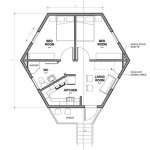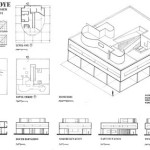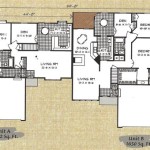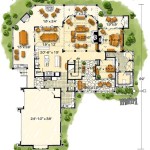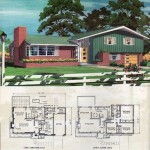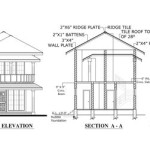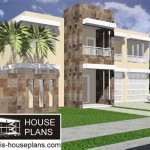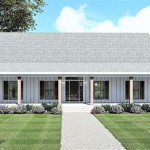Home Designer: Plan vs. Layout
When embarking on the exciting journey of building or renovating a home, understanding the nuances of a home designer's plan versus a layout becomes crucial. These terms, while often used interchangeably, hold distinct meanings and play different roles in the design process. This article will delve into the differences between a home designer plan and a layout, providing a comprehensive guide for navigating the complexities of home design.
Understanding the Plan: A Blueprint for Construction
A home designer plan serves as the foundational document for constructing a home. It encompasses a detailed portrayal of the entire structure, encompassing every aspect from the exterior facade to the intricate details of the interior layout. This plan acts as a blueprint for builders and contractors, outlining the precise dimensions, materials, and configurations required for each element of the building. The plan typically comprises various drawings, including:
- Floor plans: Providing a bird's-eye view of each level, showcasing the placement of rooms, walls, windows, doors, and fixtures.
- Elevation drawings: Depicting the exterior of the home from different angles, showcasing the architectural style, roofline, and exterior details.
- Section drawings: Illustrating cross-sections of the building, revealing the structure's interior framework and key structural elements.
- Detail drawings: Focusing on specific components like stairs, fireplaces, or custom cabinetry, providing precise dimensions and construction specifications.
The home designer plan includes vital information like:
- Room dimensions: Accurately measured to ensure adequate space and functionality.
- Material specifications: Specifying the types of flooring, wall finishes, roofing, windows, and doors.
- Electrical and plumbing layouts: Indicating the placement of electrical outlets, switches, plumbing fixtures, and ventilation systems.
- Structural details: Outlining the foundation system, framing, and load-bearing elements.
The plan serves as a comprehensive guide for construction, leaving little room for ambiguity or misinterpretation. It provides essential information for builders to procure materials, execute construction, and ensure the home is built to the specified standards and aesthetics.
Navigating the Layout: A Visual Representation of Functionality
A layout, in contrast to a plan, focuses on the overall arrangement of spaces and the flow of movement within a home. It primarily emphasizes functionality and how different rooms and areas connect and interact. While a layout might depict room dimensions and placement, it doesn't delve into the intricate construction details and material specifications found in a comprehensive plan.
Think of a layout as a simplified schematic representing the functional organization of a home. It effectively visualizes:
- Room arrangement: Providing a clear understanding of room placement and their relationships within the home.
- Traffic flow: Highlighting the pathways people take through the home, ensuring smooth movement and minimizing bottlenecks.
- Furniture placement: Showing how furniture would be arranged in each room to enhance functionality and optimize space utilization.
- Lighting and window placement: Envisioning the flow of natural light and highlighting strategic placement of windows and light fixtures.
A layout can be presented in various formats, from hand-drawn sketches to digital renderings. It's a tool for visualizing the overall feel and spatial flow before committing to a detailed plan. It also serves as a flexible starting point for exploring different room configurations, ensuring a layout that meets the homeowner's specific needs and lifestyle preferences.
The Interplay of Plan and Layout: A Collaborative Design Process
The plan and layout work in tandem to create a holistic home design. While the plan provides the blueprint for construction, the layout guides the functional organization and flow of the home. By understanding the relationship between these two elements, homeowners can effectively communicate their vision to the designer and ensure the final product reflects their desired aesthetic and practicality.
The process typically begins with the homeowner expressing their needs, preferences, and lifestyle to the designer. The designer then creates a preliminary layout, focusing on functionality and spatial organization. This layout serves as a foundation for developing the detailed home designer plan, which incorporates architectural details, material selections, and construction specifics. The plan then serves as the guide for the entire building process, while the layout ensures the home is built with proper flow and functionality.
In conclusion, understanding the distinctions between a home designer plan and a layout illuminates the key stages of the design process. The plan serves as the blueprint for construction, while the layout guides the functional organization of the home. By working together, these elements ensure the creation of a beautiful and functional living space that meets the homeowner's aspirations.

How To Read A Floor Plan And Design The Perfect Home For You

The Role Of 3d In Interior Space Planning Transformation

Home Designer Design For Diy

How To Read A Floor Plan And Design The Perfect Home For You

Floor Plans Learn How To Design And Plan

Create Site Plans And Property Designs

Modern House Design How To Achieve Openness In

Interior Design Services For Small Spaces Maximizing Every Inch

Chief Architect Vs Home Designer Suite Terrihaynaiforra1988 S Ownd

Create Site Plans And Property Designs

